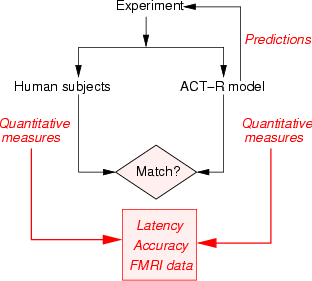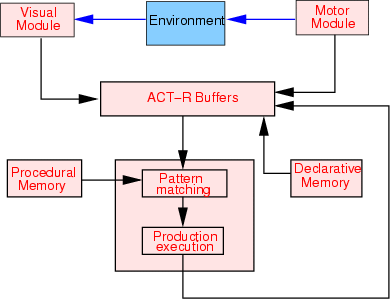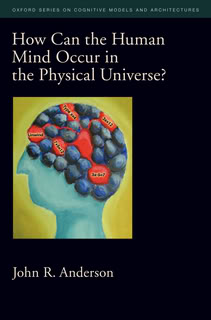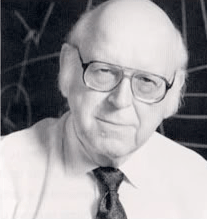About
ACT-R is a cognitive architecture: a theory about how human cognition works. On the exterior, ACT-R looks like a programming language; however, its constructs reflect assumptions about human cognition. These assumptions are based on numerous facts derived from psychology experiments.
Like a programming language, ACT-R is a framework: for different tasks (e.g., Tower of Hanoi, memory for text or for list of words, language comprehension, communication, aircraft controlling), researchers create models (aka programs) that are written in ACT-R and that, beside incorporating the ACT-R’s view of cognition, add their own assumptions about the particular task. These assumptions can be tested by comparing the results of the model with the results of people doing the same tasks. By “results” we mean the traditional measures of cognitive psychology:
- time to perform the task,
- accuracy in the task, and,
- (more recently) neurological data such as those obtained from FMRI.
One important feature of ACT-R that distinguishes it from other theories in the field is that it allows researchers to collect quantitative measures that can be directly compared with the quantitative measures obtained from human participants.


ACT-R has been used successfully to create models in domains such as:
- learning and memory,
- problem solving and decision making,
- language and communication,
- perception and attention,
- cognitive development, or
- individual differences.
Beside its applications in cognitive psychology, ACT-R has been used in
- human-computer interaction to produce user models that can assess different computer interfaces,
- education (cognitive tutoring systems) to “guess” the difficulties that students may have and provide focused help,
- computer-generated forces to provide cognitive agents that inhabit training environments,
- neuropsychology, to interpret FMRI data.
Some of the most successful applications, the Cognitive Tutors for Mathematics, are used in thousands of schools across the country. Such “Cognitive Tutors” are being used as a platform for research on learning and cognitive modeling as part of the Pittsburgh Science of Learning Center.

How ACT-R Works
A detailed introduction to ACT-R is offered in the ACT-R tutorials. Here we present only the very basic mechanism.
ACT-R’s main components are:
- modules,
- buffers,
- pattern matcher.
Modules
There are two types of modules:
- perceptual-motor modules, which take care of the interface with the real world (i.e., with a simulation of the real world), The most well-developed perceptual-motor modules in ACT-R are the visual and the manual modules.
- memory modules.
There are two kinds of memory modules in ACT-R:
- declarative memory , consisting of facts such as Washington, D.C. is the capital of United States, France is a country in Europe, or 2+3=5, and
- procedural memory, made of productions. Productions represent knowledge about how we do things: for instance, knowledge about how to type the letter “Q” on a keyboard, about how to drive, or about how to perform addition.
Buffers
ACT-R accesses its modules (except for the procedural-memory module) through buffers. For each module, a dedicated buffer serves as the interface with that module. The contents of the buffers at a given moment in time represents the state of ACT-R at that moment.
Pattern Matcher
The pattern matcher searches for a production that matches the current state of the buffers. Only one such production can be executed at a given moment. That production, when executed, can modify the buffers and thus change the state of the system. Thus, in ACT-R cognition unfolds as a succession of production firings.
ACT-R is a hybrid cognitive architecture. Its symbolic structure is a production system; the subsymbolic structure is represented by a set of massively parallel processes that can be summarized by a number of mathematical equations. The subsymbolic equations control many of the symbolic processes. For instance, if several productions match the state of the buffers, a subsymbolic utility equation estimates the relative cost and benefit associated with each production and decides to select for execution the production with the highest utility. Similarly, whether (or how fast) a fact can be retrieved from declarative memory depends on subsymbolic retrieval equations, which take into account the context and the history of usage of that fact. Subsymbolic mechanisms are also responsible for most learning processes in ACT-R.
Written by Raluca Budiu.



